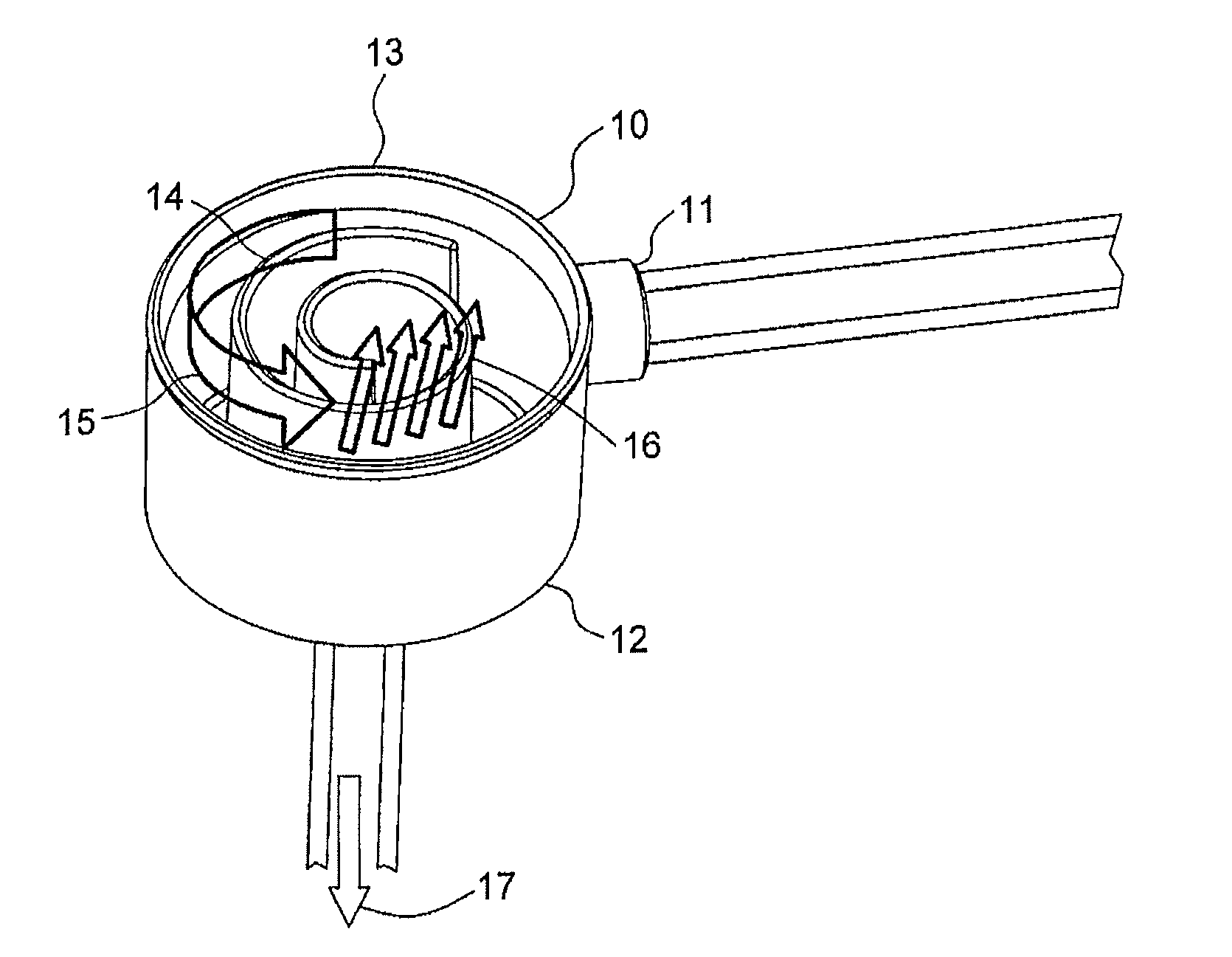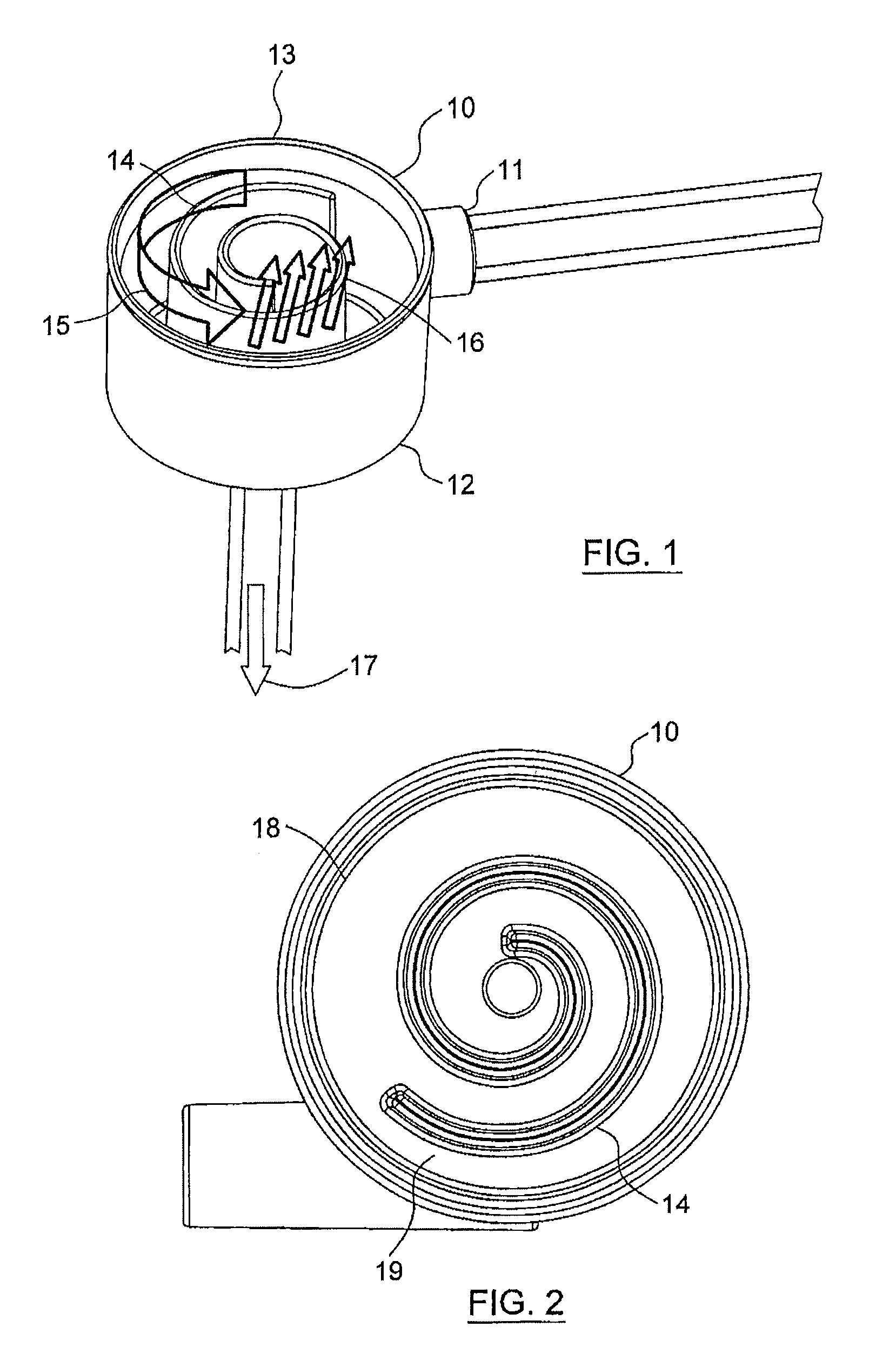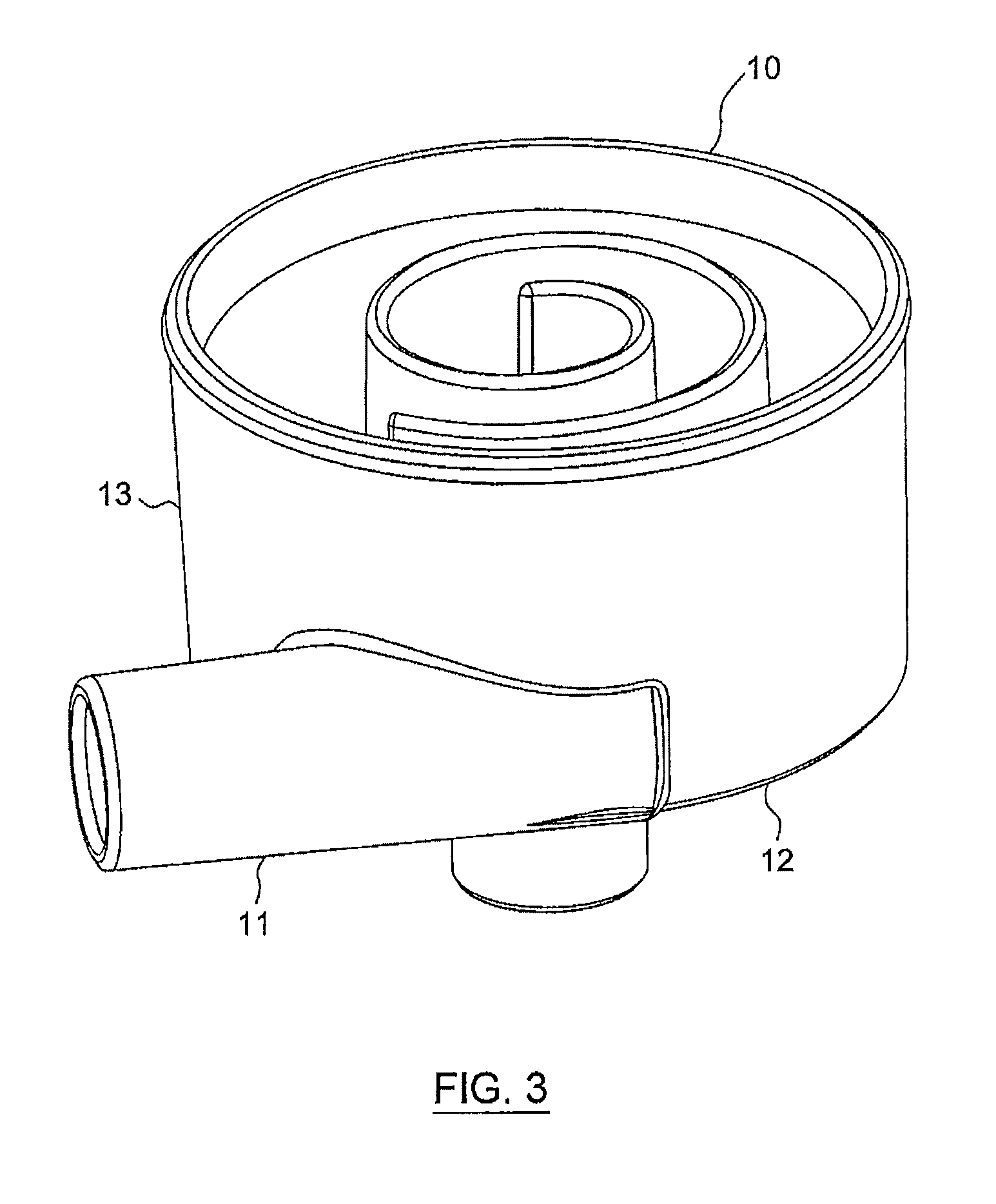Degassing device
a degassing device and liquid technology, applied in liquid degassing, water/sewage treatment by degassing, separation processes, etc., can solve the problems of air embolism, permanent brain damage, and serious damage to body functions, so as to reduce the effect of effectiveness, prolong the life, and maximize the advantages
- Summary
- Abstract
- Description
- Claims
- Application Information
AI Technical Summary
Benefits of technology
Problems solved by technology
Method used
Image
Examples
examples
[0081]The spiral degassing device according to the present disclosure shows an exceedingly well performance with regard to degassing of a liquid, especially of blood, both in in vitro and in in vivo tests.
1. Removal of Air In Vitro
[0082]In an in vitro test with bovine blood (hematocrit between 32 and 40, total protein content: 60-80 g / l) the efficacy of the degassing device according to the present disclosure was tested by injecting air into the corresponding system (FIG. 6). The setup essentially consisted of a circular flow of blood, comprising one liter of blood (bovine blood) at a temperature of 37° C., a pressure manometer, a degassing device according to the present disclosure, a dialyzer (Polyflux® 170 H, Gambro), a drip chamber and the corresponding tubing. Further, the system comprised a first air injection port S1 and a second air injection port S2, with the first air injection port S1 being located before and the second air injection port S2 being located after the pressu...
PUM
| Property | Measurement | Unit |
|---|---|---|
| distance | aaaaa | aaaaa |
| distance | aaaaa | aaaaa |
| inner diameter | aaaaa | aaaaa |
Abstract
Description
Claims
Application Information
 Login to View More
Login to View More - R&D
- Intellectual Property
- Life Sciences
- Materials
- Tech Scout
- Unparalleled Data Quality
- Higher Quality Content
- 60% Fewer Hallucinations
Browse by: Latest US Patents, China's latest patents, Technical Efficacy Thesaurus, Application Domain, Technology Topic, Popular Technical Reports.
© 2025 PatSnap. All rights reserved.Legal|Privacy policy|Modern Slavery Act Transparency Statement|Sitemap|About US| Contact US: help@patsnap.com



